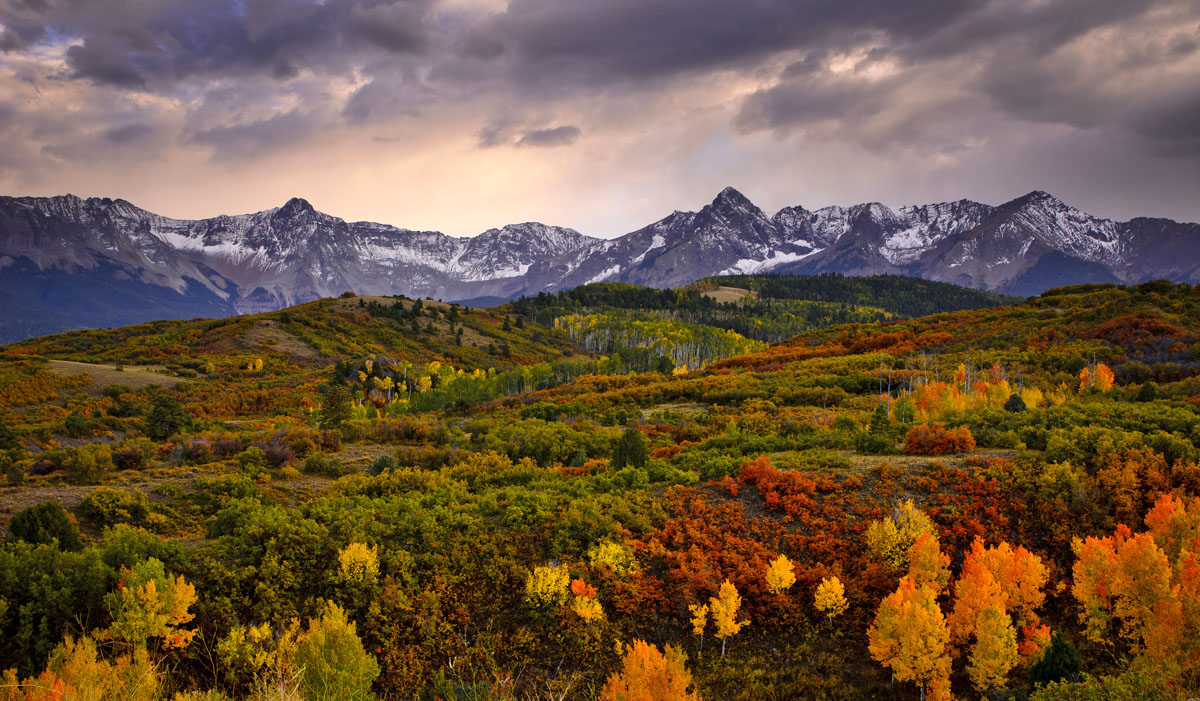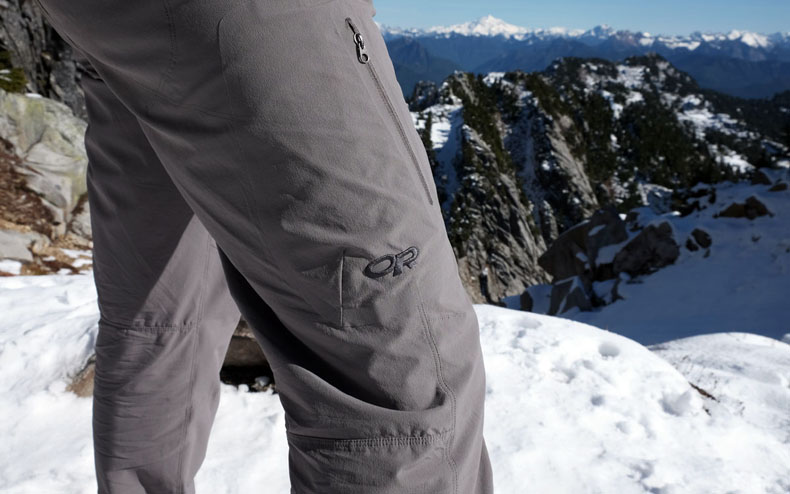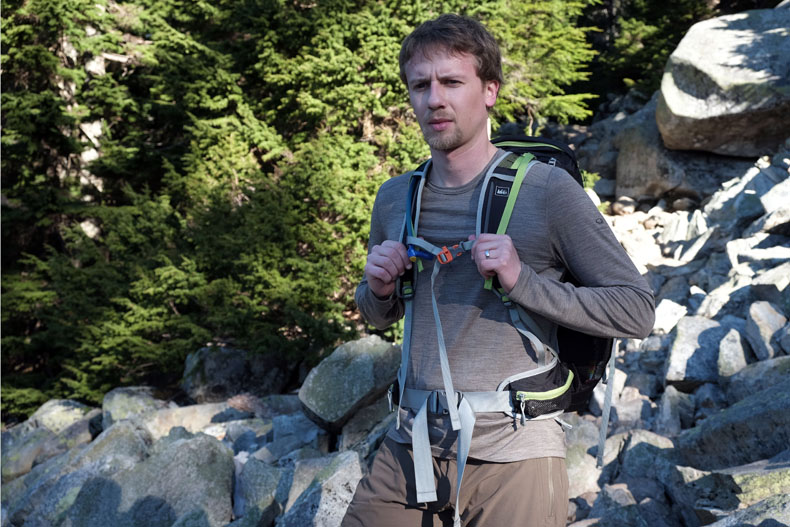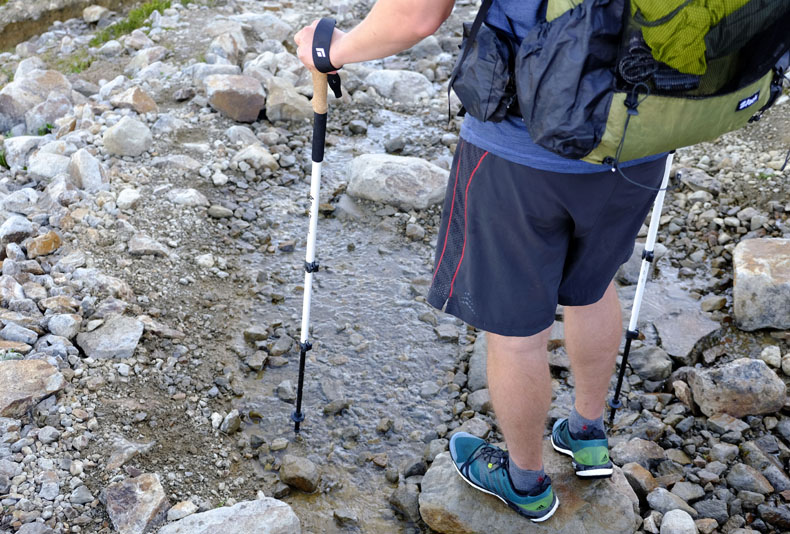Hiking Gear Essentials For Fall
Fall is our favorite time of the year to hike: the temperatures have cooled off, the bugs are mostly gone, and the colors in the mountains are incredible. For this shoulder season, we always make some adjustments to our hiking gear kit, adding a little bit of warmth and protection for the changing conditions. Below are five fall clothing and footwear ideas for hikers, tried and tested with our countless hours on the trail during all seasons. For more information on hiking gear in general, see our hiking and backpacking gear reviews.

1. Footwear: A Little Extra Protection
In the dead of summer, you can get away with minimal hiking footwear—we often see people wearing trail-running shoes or even less. In the fall, however, the trail may be a littler wetter and rougher, and your pack may be a little heavier with some added layers. Accordingly, we like to bump it up to lightweight hiking boots that offer more support and protection.
In this category, you can’t go wrong with the Salomon X Ultra Mid II GTX. Salomon dominates our hiking footwear rankings in general by offering the best combinations of comfort, weight, and protection, and this is our favorite lightweight boot. The X Ultra Mid II GTX has the feel of a running shoe but with more ankle support, and the Gore-Tex liner will give you extra piece of mind should you encounter a wet and muddy trail. Another solid lightweight option is the Lowa Innox Mid GTX, a super comfortable boot that offers a bit more protection underfoot (the downside is that it’s more expensive). For more footwear options, see our article on the best hiking boots.
2. Thicker Hiking Pants
Earlier in the year, the name of the game is staying as cool as possible and that includes your hiking pants. When the temperatures are hot, we love a lightweight pant that barely feel like it’s there. In the fall, it’s not a bad idea to choose hiking pants with added thickness and wind blocking ability but that still move well on the trail.

The Outdoor Research Ferrosi is our top overall hiking pant pick and thick enough for most fall conditions. They cut wind decently well with a softshell-like feel yet still offer excellent range of movement. For short fall hikes in chilly conditions or if you plan on bushwacking, we love the Fjallraven Vidda Pro. These pants are uniquely made with a G-1000 polyester/cotton blend, which we were skeptical about at first until trying them on. The Vidda Pro are tough and warm without compromising much in the way of comfort. We did overheat in these pants on a hot summer hike, but they make a great fall companion. And with any pair of hiking pants and particularly thinner models, you can always wear a thin wool baselayer underneath for added warmth (more on baselayers below).
3. Synthetic Outer Layer
Synthetic jackets are absolutely awesome. They breathe much better than down and continue to effectively insulate when wet, making them an ideal outer layer for chilly fall conditions. Based on our experience, a lightweight synthetic jacket is ideal for around 40 to 60 degrees Fahrenheit (5 to 16 degrees Celsius), which again is perfect for this time of year.
Our favorite synthetic jacket is the Arc’teryx Atom LT: it’s warm, breathable, and as comfortable as they come. People who really are moving on the trail may appreciate even better ventilation from the cozy Patagonia Nano-Air, but that jacket is less durable than the Atom LT and may have a shorter lifespan. Either way, a synthetic jacket can be worn as your outer layer in the fall, and unlike down, you shouldn’t have to take it off unless the temperature really warms up. Most synthetic jackets have a DWR treatment for added protection in light to moderate precipitation.
4. Merino Wool Baselayers
Getting into October at any kind of elevation, you may want a top and/or bottom baselayer for added warmth. Merino wool is the clear material of choice: it’s lightweight, super comfortable, won’t soak up perspiration and water like cotton, and doesn’t much absorb stink either (nothing is perfect, but it does a pretty darn good job). The issues with merino are that it’s expensive and won’t last forever (make sure to wash in cold water and line dry if possible), but we still think it’s worth it.
A number of gear companies make merino wool baselayers, and we’ve had good luck with the Icebreaker Everyday Crew. You can wear this as a standalone piece or under another shirt, and if you add your synthetic jacket above you’ll be in great shape when things really cool off. For a cheaper non-merino option, Patagonia’s Capilene collection is legendary and we’ve been wearing it for years. A shirt like the Capilene Lightweight Crew will provide some added warmth at a reasonable price, with thicker midweight and thermal weight options available as well. The upside to Capilene is that it should last longer than merino—we’ve had Capilene shirts that are six years old and counting and have gotten heavy use. Thin merino is more likely to last a season or two unless you rarely take it out of your closet.

5. A Simple Beanie
Heat escapes from your head, and the baseball hat that blocks sun in the summer won’t help you much in the fall. At the same time, we like to save the heavyweight hats for skiing in the winter and in the fall opt for a lighter weight beanie made from merino wool. Like the baselayers described above, this type of hat will give you excellent warmth for the weight without soaking up a ton of sweat and smelliness. You’ll find it particularly helpful in cool temperatures when you stop hiking and start losing heat quickly.
For a fall hiking hat, you can’t go wrong with the SmartWool Cuffed Beanie. It is fairly straightforward but checks all the boxes: it’s soft, warm, and durable. We’ve used it for running on cold days and fall hiking on multiple occasions, and it works well for a wide range of uses and activity levels. Another slightly thicker option is the Ibex Meru hat, which we have a sentimental attachment to after many hiking and backpacking trips over the years. It too is a great lightweight merino beanie, but the SmartWool is cheaper and easier to adjust based on head size, so we hesitantly give the nod in that direction.
Other Fall Gear Considerations
No matter the time of year, hikers need a good rain jacket. The best choices depend on your budget and how you intend to use the shell (i.e. will it double down for everyday use?), but a great value pick is the Marmot PreCip. It’s not a super lightweight or technical piece but should keep you dry and look good in the process. Because of the reasonable cost, it’s the jacket that we recommend most to friends and family. For a full list of options including serious performance pieces, see our article on the best rain jackets.
Hikers always need a good daypack. In the fall you’ll likely have a larger load with more layers, so you may want to increase the capacity of your pack up the 20+ liter range. The Osprey Stratos 24fits that criteria nicely, and it kept our gear reasonably dry during a recent rainstorm even when forgetting to use the built-in rain cover. If you have any electronics in your bag or don’t want to risk getting anything wet, the cover is integrated and easy to use. And the Stratos 24 is extremely comfortable with an advanced suspension and has all the bells and whistles that most hikers need.

We think trekking poles always are a good idea, but they make even more sense in the fall when the trail may be wet and rocky. We’ve tested a number of poles and like the mostly-carbon Black Diamond Alpine Ergo best. A cheaper option is the REI Traverse Power Lock, which uses aluminum instead but hits a nice price point for the occasional hikers. Regardless of which pair you choose, trekking poles will help with balance—particularly on downhills—and save your knees for more years of hiking.

